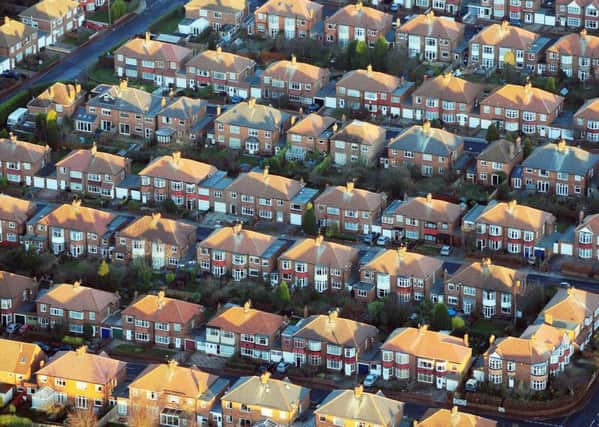Bradford shamed in league of empty homes hotspots


New analysis of Government figures showed 4,154 homes had been left empty for more than six months in Bradford last year - which contributed to West Yorkshire having the highest number of long-term empty properties of all English metropolitan districts - 12,292, an estimated £1.4bn worth of potential homes that could be occupied.
An investigation by The Yorkshire Post in December last year, based on then-most recent figures from the Department for Communities and Local Government (DCLG), showed 77,177 houses in the region had stood empty in 2014 - with 27,058 deemed as vacant ‘long-term’, unoccupied for more than six months.
Advertisement
Hide AdAdvertisement
Hide AdBoth figures dropped slightly in 2015, to 74,841 and 26,750 respectively - but those left empty are still worth billions of pounds and could help to solve the region’s “housing crisis”, analysts say.
Leeds ranked fourth in England, with 2,679 long-term empty homes, worth an estimated £364m, compared 2,915 in 2015 and 4,542 in 2005, according to property website Property Partner.
Elsewhere in the region, Kirklees, Sheffield, Calderdale, Doncaster, Wakefield and Barnsley all featured in the top 20 worst-affected towns and cities in England.
While nationally, the number of long-term empty properties has dropped in the last ten years, Bradford bucked the trend by seeing an increase from 3,871 in 2005 to 4,154 in 2015 - a rise of seven per cent.
Advertisement
Hide AdAdvertisement
Hide AdAcross England, 203,596 long-term vacant homes were recorded in England last year - valued at a staggering £38bn
Property Partner chief executive Dan Gandesha said the national figures revealed “a shocking waste of opportunity”.
He said: “Over a decade ago, the law changed giving councils the power to seize empty homes through Compulsory Purchase Orders and rent them back out to tenants, if they lay vacant for more than two years.
“But we still find not enough being done in many parts of the country. If just half of the current empty homes could be brought to market, it would go a long way towards resolving the housing crisis.”
Advertisement
Hide AdAdvertisement
Hide AdBradford Council’s empty homes and loans manager, David North, said that between 2005 and 2009 the number of long-term empty homes in the city almost doubled from 3,871 to 7,302 - prompting an investment of more than £3m of council resources with “dramatic results”.
“Since 2009 there are 3,148 fewer long term empty homes - a reduction of 43 per cent, he said.
“There is still a lot of work to do and we have devised a number of ways to encourage private owners of empty homes to bring their properties back into use.”
Since 2010, the council has voluntarily acquired 22 properties and compulsory-purchased 11 properties.
Advertisement
Hide AdAdvertisement
Hide AdA Leeds Council spokesman said it is tackling the issue “head on”.
He said: “We have invested a significant amount of resource into bringing empty homes – the vast majority of which are in private hands - in Leeds back into use and this will continue to be a priority for us as a council.
“We have already seen some excellent results, with the number of empty homes across the city dropping by more than 3,000 over the past five years.
“There is no mistaking that there is still much more to do.”
Advertisement
Hide AdAdvertisement
Hide AdA DCLG spokesman said: “The number of empty homes is at its lowest since records began, with a 30 per cent decrease in long term empty homes in Yorkshire and the Humber since 2010.
“Over 100,000 long-term empty properties have been brought back into use since 2010.”